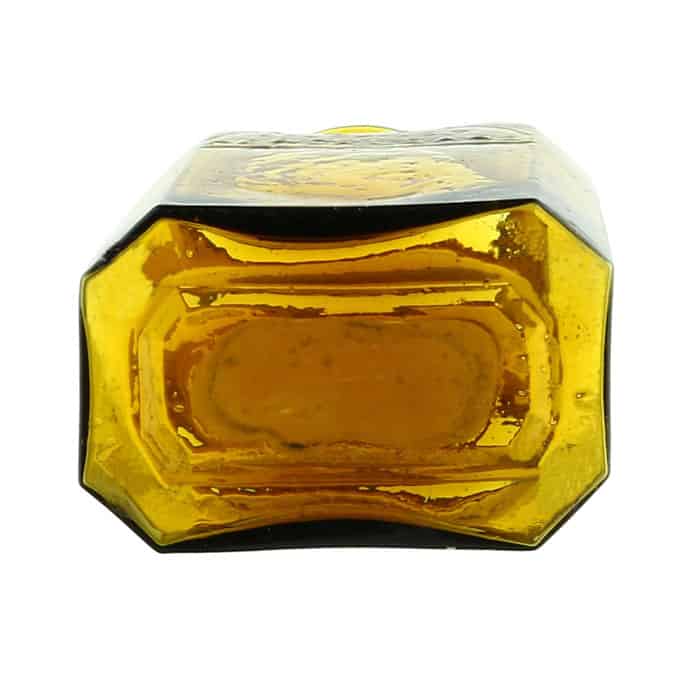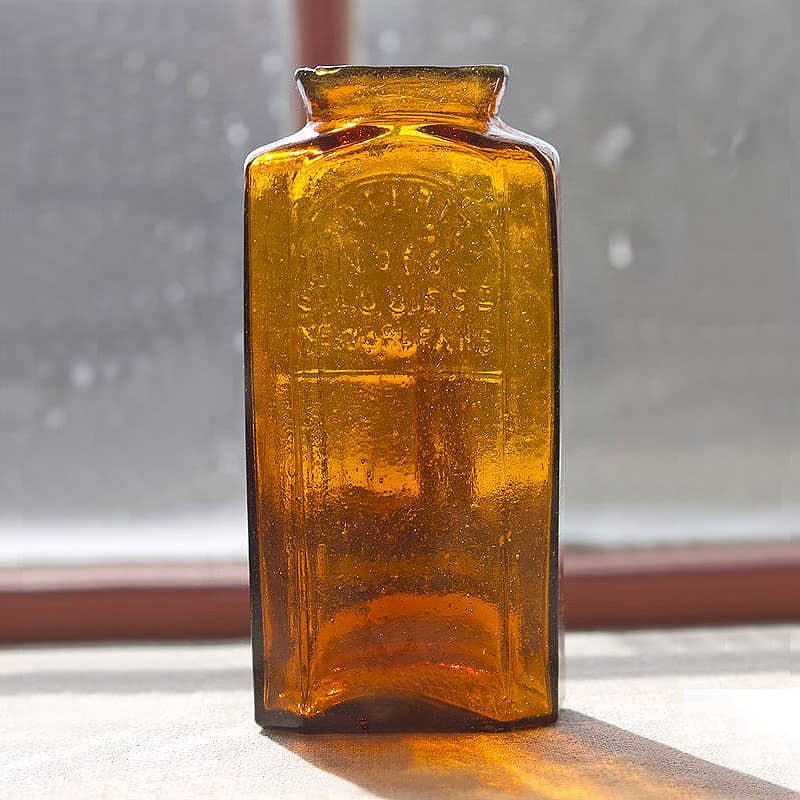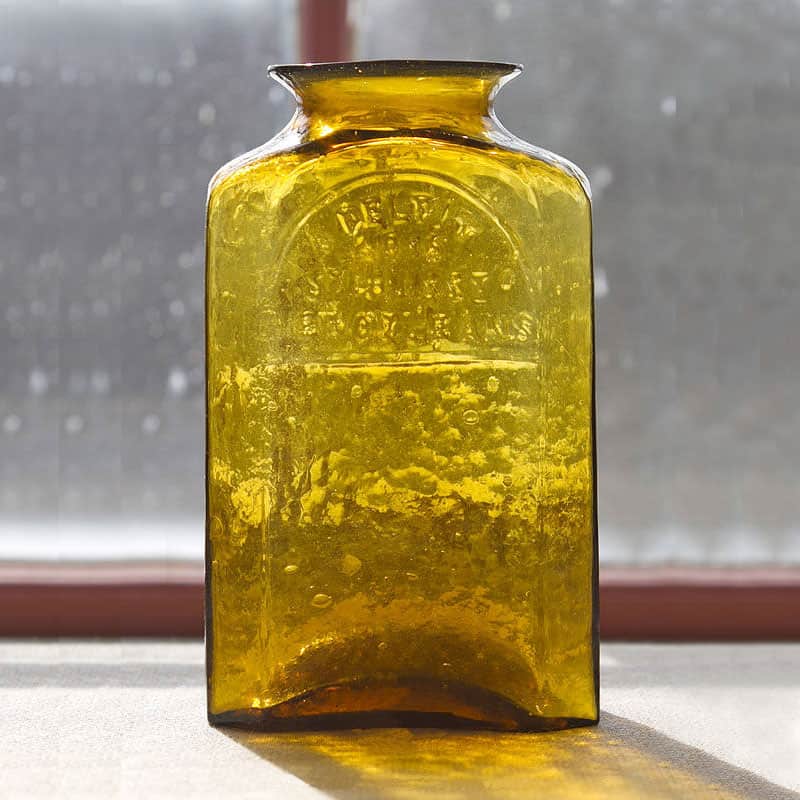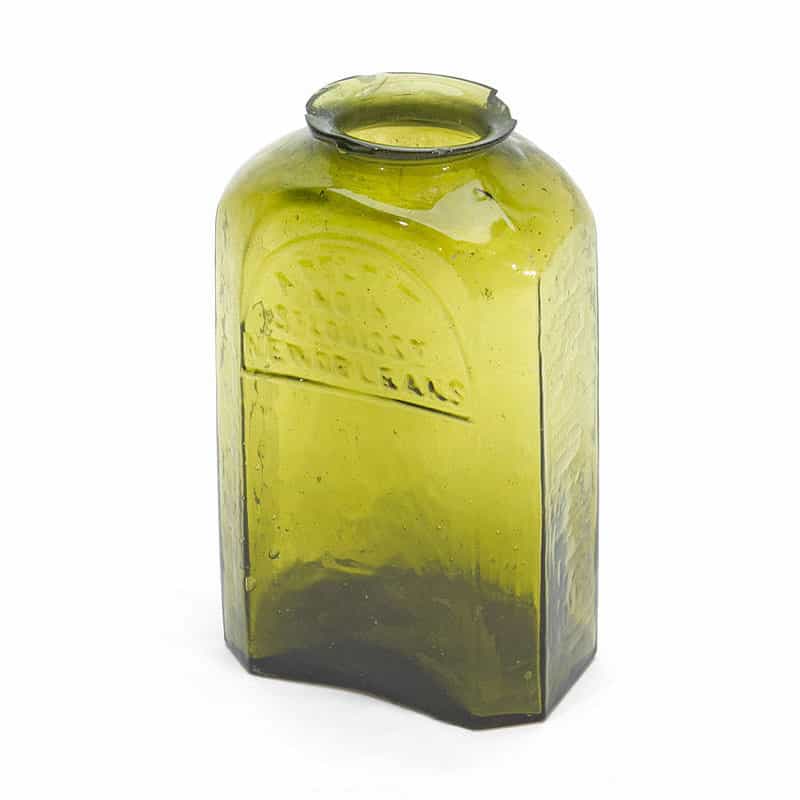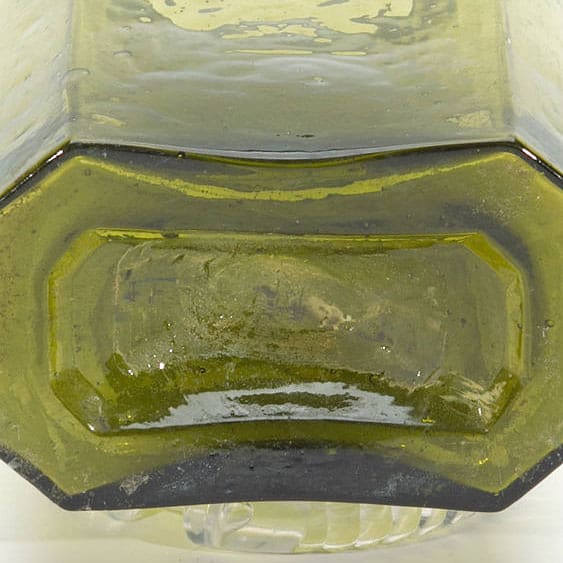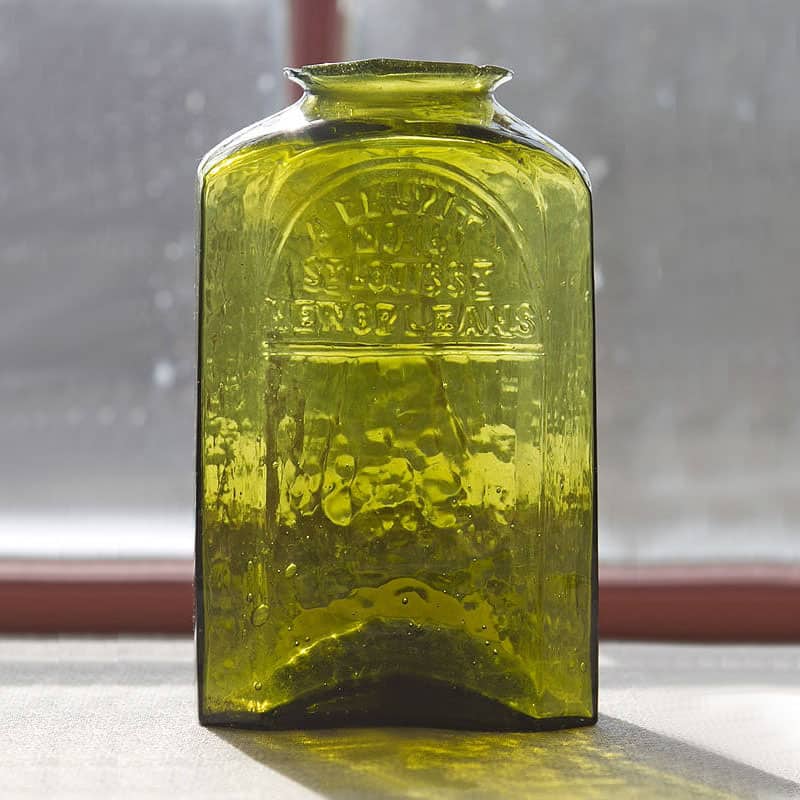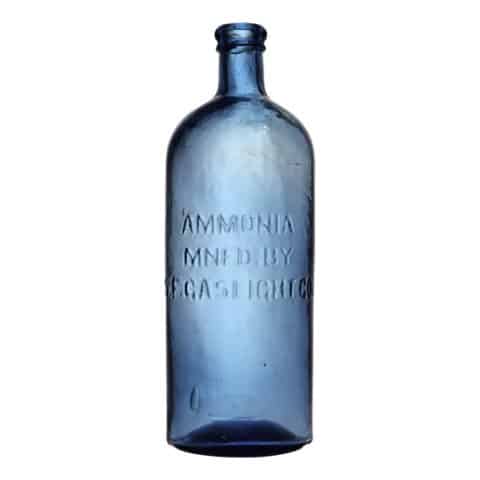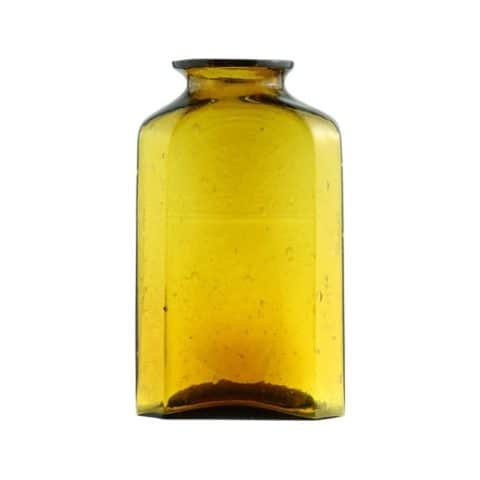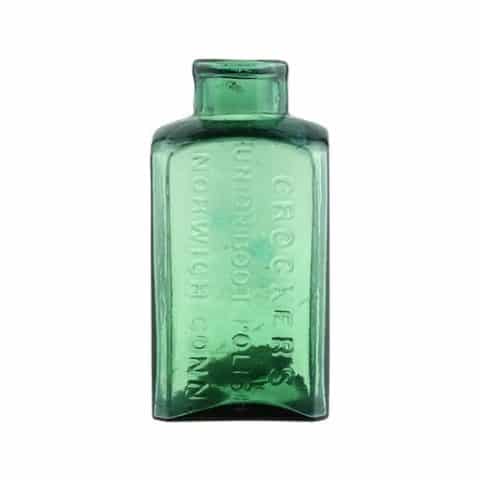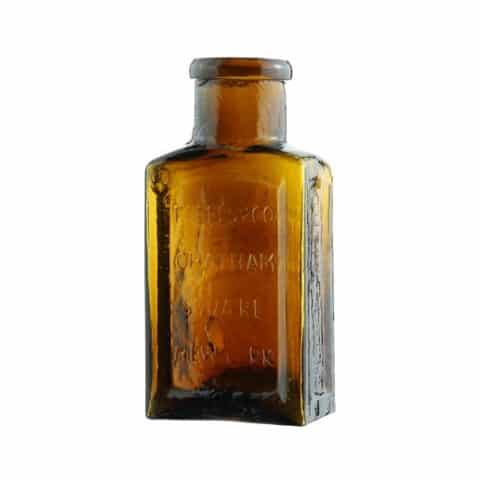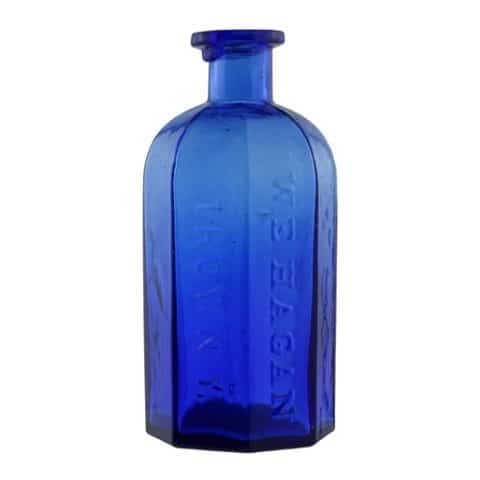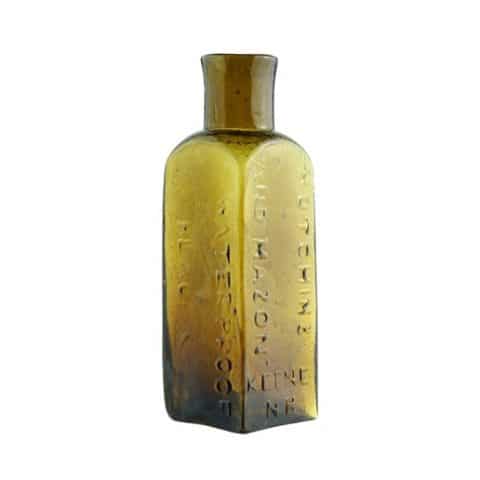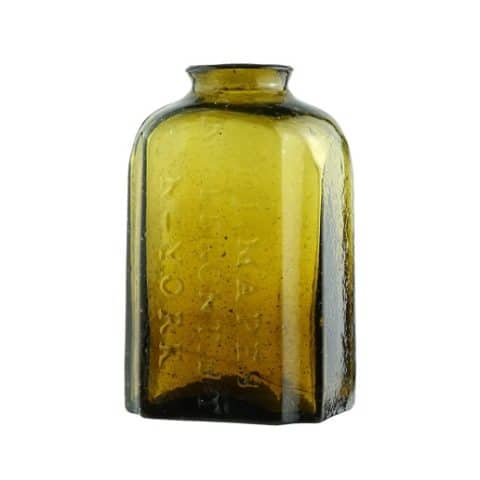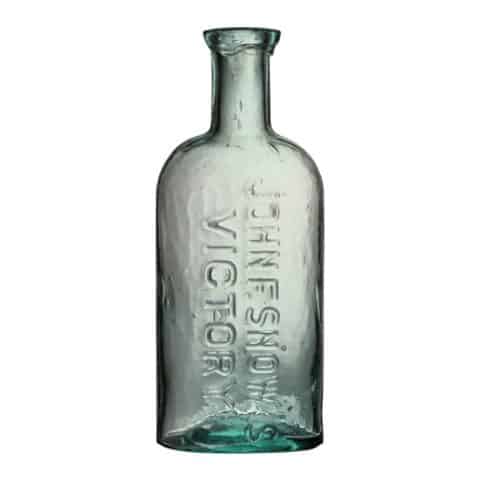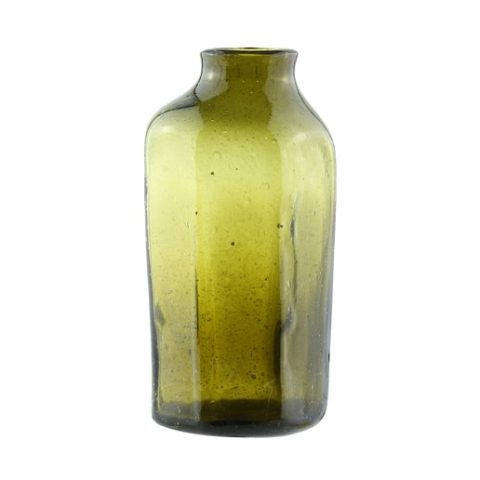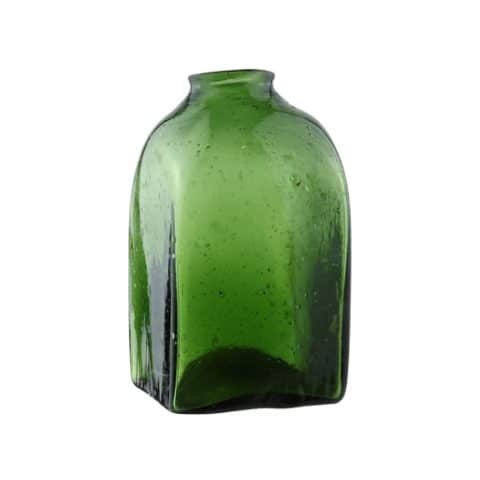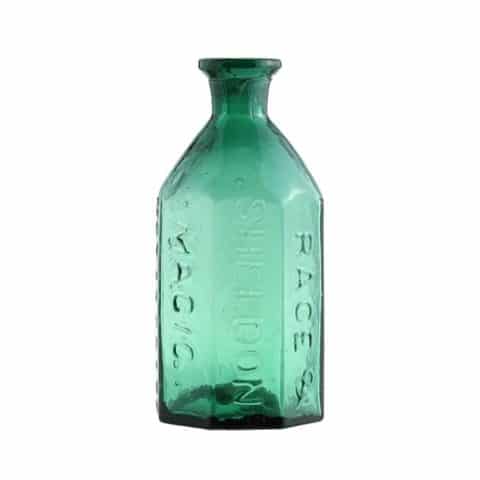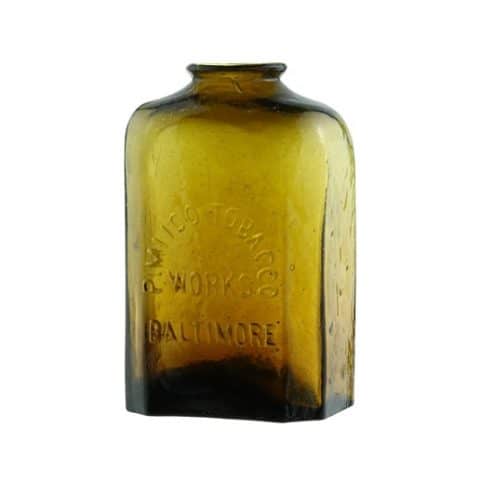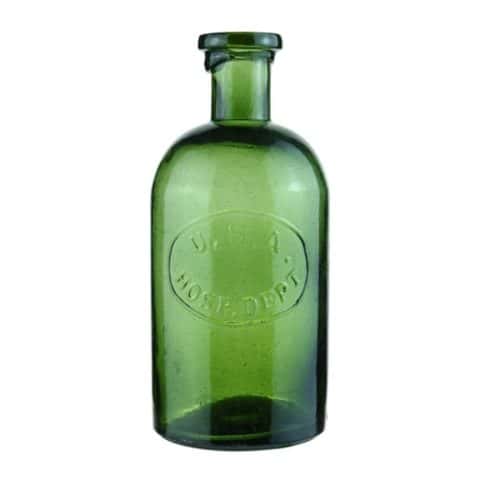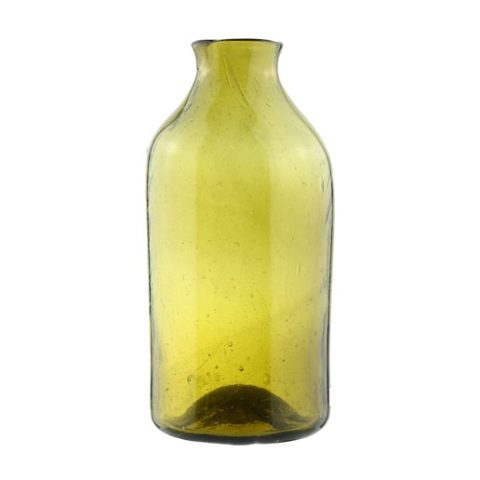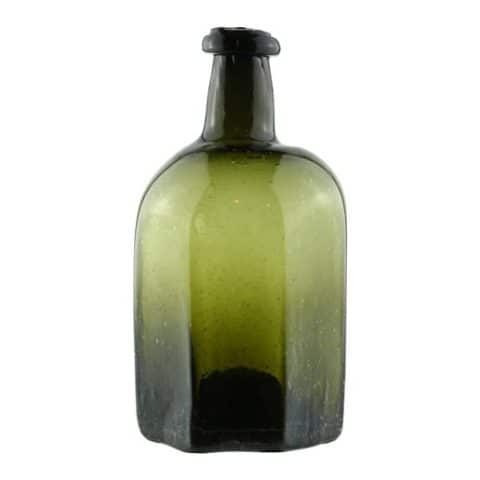A. Delpit No 16 St. Louis St. New Orleans
A. Delpit
No 16 St. Louis St.
New Orleans
Adrien Delpit, New Orleans, Louisiana
Rectangular Yellow Snuff Bottle
Provenance: Michael George Collection
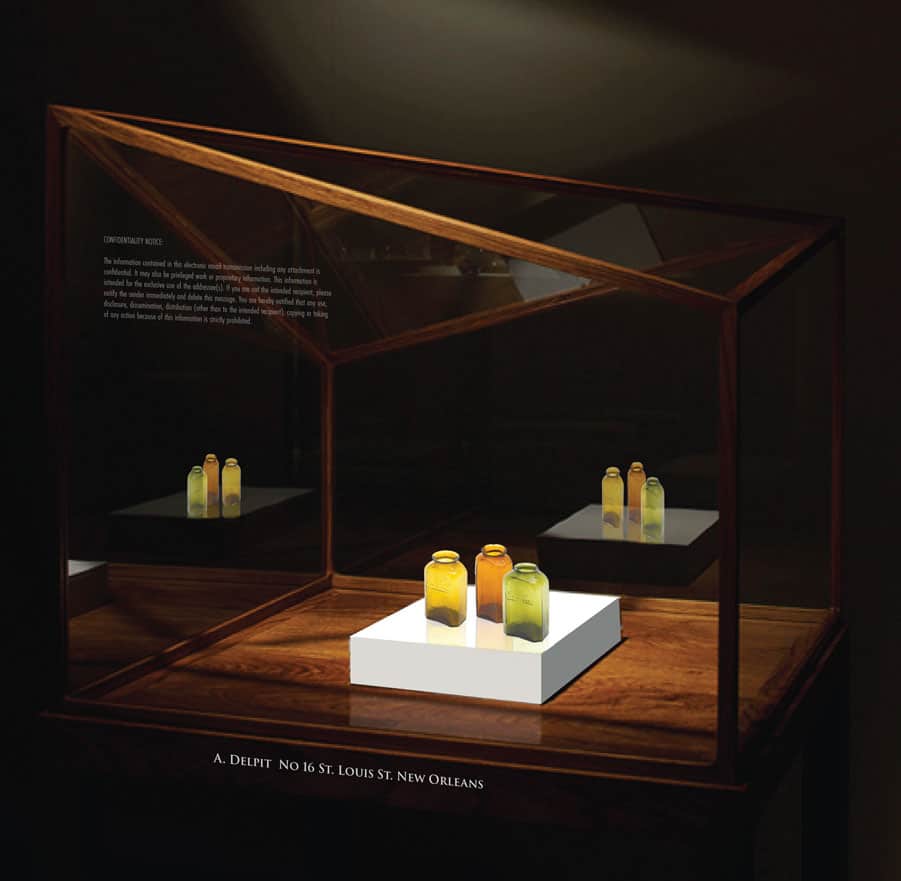
Adrien Delpit was born in 1810 in France. He would come to America and become a nationally and internationally known New Orleans tobacco and snuff manufacturer, wholesaler and retailer. The Delpit concern was the only snuff factory in the South, and the oldest tobacco factory in Louisiana.
Our embossed “A. Delpit No 16 St. Louis St. New Orleans” snuff bottle is unusually shaped, rectangular with beveled corners and was blown in a bright yellow-amber glass, There is a delicate tooled flared mouth and a smooth base. The bottle measures about 4 ¼ inches tall. The embossed copy is delicate and usually tough to read. It is set within a recessed framed half-circle in four lines. The proprietor would have placed a paper label on remaining smooth areas of the bottle. A cork would have been used to contain the contents.
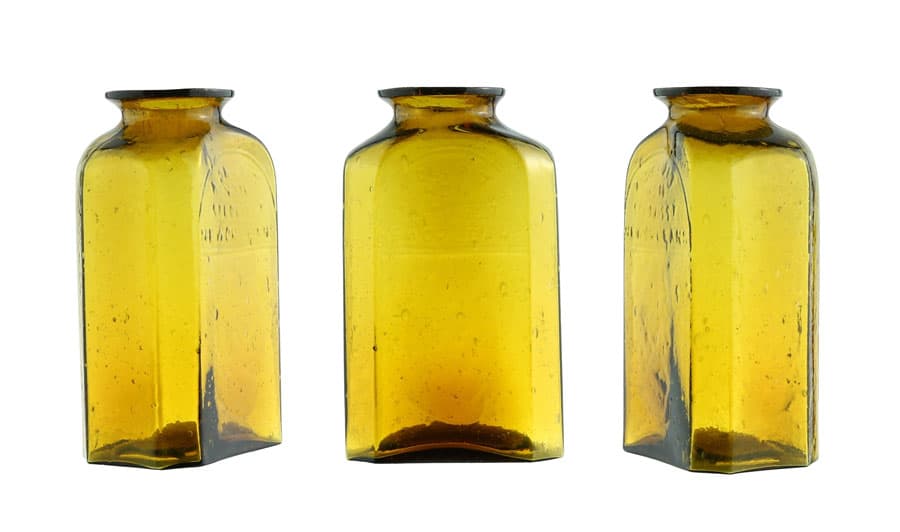
The Delpit business started in 1808, with Julien Delpit, who operated a tobacco factory in Algiers, with a salesroom in New Orleans. Adrien Delpit was the nephew of Julien who took over after Julien’s death. The first time we see them together was in 1822 when they were listed as “J. & A. Delpit, tobacconist, 118 Chartres, New Orleans.” Four years later, in 1836, the Algiers factory was moved to New Orleans. The Adrien Delpit Segar & Snuff Manufactory would settle at 16 St. Louis Street. Eventually the A. Delpit factory expanded to Nos. 11 to 17 St. Louis Street.

Adrien Delpit died in 1883 and was succeeded by Alfred Dufilho, who had been the manager for seven years previous. He purchased the business in the year above mentioned. At the time, the factory employed from eighty to one hundred hands.
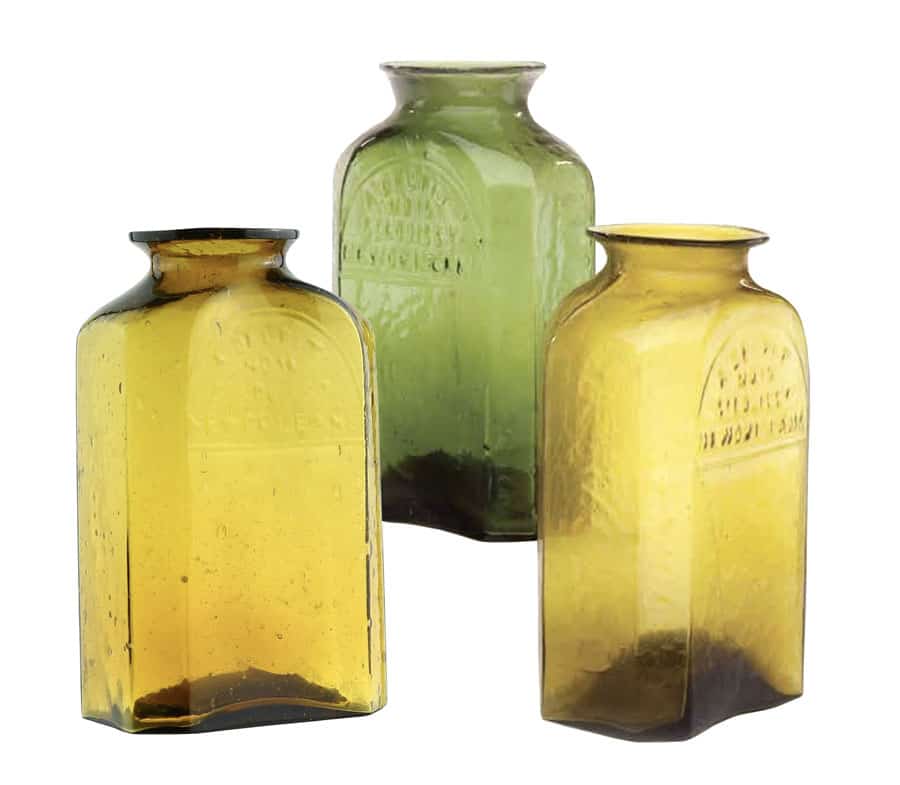
The following account from the Commercial Bulletin Price, Current and Shipping List (June 5, 1880) gives an outstanding sketch of A. Delpit.
Mr. A. Delpit.
The building in which this manufactory is situated occupies Nos. 13 and 15 St. Louis Street. After a brief glance at the well-appointed salesrooms where we observed several cases of handsome meerschaum pipes recently selected by Mr. Delpit in Europe and a large number of quaint ornamental China jars which contained fine grades of snuff including Perique, Natchitoches, Virginia, French rape, rose accented, Macouba and Scotch snuff, and a large stock of various kinds of tobacco and cigars tastefully arranged along the walls, we passed to the right and entered the store room of the establishment. Here we found large stocks of tobaccos and snuffs the latter packed in ancient-looking foreign carboys and immense jars that forcibly reminded us of Morgiana and the way she settled the 40 thieves. Large packages of snuff were in process of packing for Hamburg and at this point, we learned that owing to the advantages possessed by Mr. A. Delpit over all others engaged in the business on account of holding thoroughly matured manufacturers, he not only sells largely throughout the United States but his products are in demand in Cuba, Vera Cruz and Europe as well.
Further along we noticed stocks of various brands of cigars and more snuff of all kinds. Passing the offices which are in the rear of the salesrooms, we were conducted through a clean, well-paved yard that bore the same evidences of that careful attention, visible in the departments we had just left and entered the factory of the establishment. A handsome engine that drives the machinery on the various floors was stationed at the entrance and next to it was an immense machine that pounds the tobacco into snuff, which by this process retains the juices of the leaf. The extraordinary plan is to grind the tobacco which is the method universally adopted in making the commoner grades of snuff; consequently the product obtained by this more efficient means involves greater cost on account of the extra time occupied in the manufacturer.
We now advanced into the receiving warehouses where the leaf is received and opened. In the rear of this we observed the factory’s stock department where were stored large stocks of snuff in demijohns, jars, bottles, and barrels.
Mounting to the second floor we found ourselves in the stripping room where a staff of employees were engaged in removing the stems from the leaf. Adjoining this department we noticed an ingenious machine turning out fine cut tobacco, and a grinding apparatus that grinds the leaf into powder, which is transferred to a number of fine sieves that give it the necessary consistency, where it is flavored and perfumed according to the requirements of the different brands of snuff made famous by this firm. On the third floor is situated the packing room of the establishment where the various snuffs and fine cut tobaccos are packed in demijohns, pails and bottles.
In some very old looking jars with their labels stained, and worn with age we observed some snuff, that had rested in these ancient receptacles for the last thirty years. Upon examination we began to understand how it was the costly jewelled (sic) snuff box and its contents were necessary to the toilet of a gentleman in the days of the Georges; for indeed no richer perfume we ever inhaled was equal to this, and at the same time the inhalation was invigorating, in place of relaxing the system which is the case with ordinary perfumes.
The next department is used for making paper packages of fine cut tobaccos, and here in bins around the walls, where stored large stocks of the various qualities of tobaccos carried by this firm.
We now entered the drawing room, which contained 1800 frames upon which were spread fine cut tobaccos, making one of the most extraordinary sites of the factory.
On the fifth floor were stored miscellaneous goods and discarded tobaccos, for nothing but the purest leaf is used by this house. Everything in this complete manufactory proceeds with the most extreme regularity and precision and the intention paid to cleanliness and all departments was very gratifying to us as representative of the leaves of the weed; and clearly indicated the competence of the management. In connection with this we must not forget to mention that the intelligent foreman who accompanied us has been with the firm for fourteen years, and in all probability a good deal of the silent, steady working we admired so much, during our pleasant tour of inspection, was owing to his careful supervision of all departments.
We now returned to the offices, where we were treated to a site of the original medals of merit received by this firm at the Paris Expositions of 1855 and 1867, that of Altona, Germany, 1869, also at the Louisiana State fair in 1870, thus giving another evidence then that the manufacturers of this old house are esteemed for their genuine qualities not only throughout the United States but in the principal Capitals of Europe.
Although Mr. A. Delpit is chiefly celebrated for snuffs of the various well known brands emanating from his house, he also deals very largely in smoking and chewing tobaccos, the first including the brands Perique, Havana, Universal, Planters’ Own, and Sweet Home, and the latter embracing Universal No. 1, Planters’ Own No. 2 and Sweet Home No. 3.
From what we can learn there can be no question this is the largest snuff manufactory in the United States and it has acquired this position at the present date by the knowledge and forethought of its proprietor, is always taking care to hold sufficient stocks of manufactured goods to keep the brands up to their present degree of excellence. After another glance at the tempting display of richly carved meerschaum pipes which we consider comprise the finest assortment we have seen in this country, we bid adieu to the courteous manager who has the business in charge during the absence of Mr. Delpit in Europe, with a feeling that we had enjoyed a rare treat exploring this rich old place; and that the principal was well represented in his absence on the other side of the Atlantic.
Primary Image: A. Delpit New Orleans snuff bottle imaged on location by Alan DeMaison, FOHBC Virtual Museum Midwest Studio.
Support Image: Auction Lot 73: “A. Delpit / No 16 / St. Louis St. / New Orleans” Snuff Bottle, America, 1860-1870. Rectangular with beveled corners, bright orange amber, tooled flared mouth – smooth base, ht. 4 1/4 inches; (3/8 inch chip on edge of mouth). Similar in form and construction to McK plate 227, #5 A scarce bottle with an unusual form and bright color. Dr. Charles and Jane Aprill collection. – Norman Heckler Jr. & Sr., Norman C. Heckler & Company, Auction #174
Support Image: Auction Lot 52: “A. Delpit / No 16 / St. Louis St. / New Orleans” Snuff Bottle, America, 1845-1860. Rectangular with beveled corners, brilliant yellow with a topaz tone, wide tooled flared mouth – iron pontil mark, ht. 4 1/2 inches; (professionally cleaned with light remaining wear marks and haze). Similar in form and construction to MW plate 75, #15 A delicate flared mouth, beautiful color and heavily whittled panels make this one a winner. Generally fine condition. Dr. Charles and Jane Aprill collection. – Norman Heckler Jr. & Sr., Norman C. Heckler & Company, Auction #174
Support Image: Auction Lot 139: “Tabac / De / I. Delpit / Nouvelle / Orleans” Applied Seal Bottle, three piece mold construction, America, 1840-1860. Cylindrical, deep yellow olive, applied sloping collared mouth with ring – pontil scar, ht. 10 7/8 inches; (light exterior high point wear). A scarce early bottle in fine condition. Dr. Charles and Jane Aprill collection. – Norman Heckler Jr. & Sr., Norman C. Heckler & Company, Auction #182
Support Image: Auction Lot 59: “A. Delpit / No 16 / St Louis St / New Orleans” Snuff Bottle, America, 1845-1860. Rectangular with beveled corners, bright yellow green with an olive tone, tooled flared mouth – iron pontil mark, ht. 4 3/8 inches; (four chips from edge of mouth, the largest being 1/2 inch). Similar in form and construction to MW plate 75, #13 A wonderful, rare color for this mold. Bold embossing and nicely whittled surfaces. Dr. Charles and Jane Aprill collection. – Norman Heckler Jr. & Sr., Norman C. Heckler & Company, Auction #174
Support: Reference to American Bottles and Flasks and Their Ancestry by Helen McKearin and Kenneth M. Wilson, Crown Publishers, New York, 1978.
Support: Reference to The Industries of New Orleans by Andrew Morrison · 1885
Join the FOHBC: The Virtual Museum is a project of the Federation of Historical Bottle Collectors (FOHBC). To become a member.

